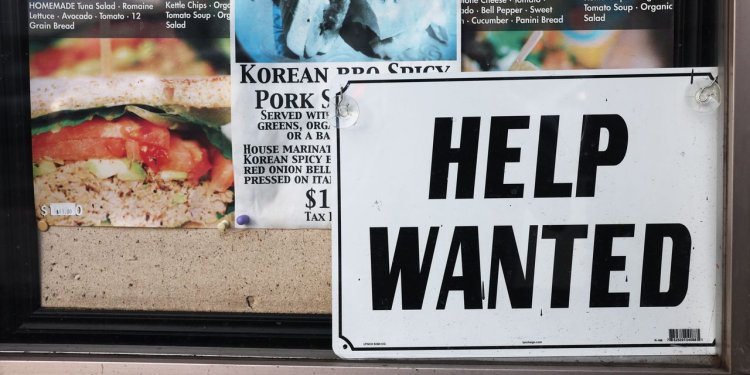The Profit Squeeze Is On
One factor behind the decline in profit margins is rising wage and salary bills for private industry. Photo: Mario Tama/Getty Images By Justin Lahart June 13, 2023 5:30 am ET If you haven’t noticed how badly profit margins are getting squeezed, it might be because management is trying to keep you from noticing. With most American companies having reported results, earnings in the first quarter weren’t nearly as bad as analysts feared they would be. Refinitiv now estimates that earnings per share among S&P 500 companies were flat versus a year ago. Compare that with April 1, when analysts had expected a 5.1% decline. Even allowing for analysts’ tendency to lowball ahead of earnings season, and for the fact that companies reduced their share count through stock buybacks, that is a signific


One factor behind the decline in profit margins is rising wage and salary bills for private industry.
Photo: Mario Tama/Getty Images
If you haven’t noticed how badly profit margins are getting squeezed, it might be because management is trying to keep you from noticing.
With most American companies having reported results, earnings in the first quarter weren’t nearly as bad as analysts feared they would be. Refinitiv now estimates that earnings per share among S&P 500 companies were flat versus a year ago. Compare that with April 1, when analysts had expected a 5.1% decline. Even allowing for analysts’ tendency to lowball ahead of earnings season, and for the fact that companies reduced their share count through stock buybacks, that is a significant beat.
S&P 500 sales grew more swiftly, rising 3.6% overall from a year ago (and more, on a per share basis), so profit margins did slip. Plugging Refinitiv’s earnings-per-share figures into sales-per-share figures from S&P Dow Jones Indices, earnings came to 11.8% of sales in the first quarter compared with 13.2% a year earlier. That is still a historically high level of profitability, however. In the prepandemic first quarter of 2019—a good quarter for margins—the margin was 11.6%.
Considering how companies’ labor bills, in particular, keep climbing, this might count as evidence that they have been fairly successful in passing rising costs on to their customers. But other data tell a different story.
The so-called pro-forma results that many companies highlight don’t include many of the charges (often characterized as “one-time,” or “nonrecurring”) that they must include under generally accepted accounting principles, or GAAP.
Use GAAP, and S&P Dow Jones Indices estimates S&P 500 profit margin in the first quarter was 10.8%. And in the fourth-quarter—the quarter when many companies kitchen-sink “one-time” problems, it was 8.6%. Moreover, as The Wall Street Journal recently documented, many companies have been employing earnings-boosting moves that are acceptable under accounting rules, such as reducing depreciation expenses.

Commerce Department figures give a more sobering read on profit margins. Its measure of after-tax corporate profits as a share of gross domestic product—a common proxy for economywide profit margins—came to 8.7% in the first quarter. That was the lowest level since the first quarter of 2016. One factor behind the margin squeeze: Private industry’s wage and salary bill rose by 5.8% from a year earlier.
Separate data, also from the Commerce Department, shows that some of the industries that saw some of the biggest profit boosts from the flurry of buying, and price increases, set off by the pandemic, are now experiencing sharp margin declines. Profits for food producers came to 5.7% of sales in the first quarter compared with 8.2% a year earlier, for example, while metals producers’ margins slipped to 9.5% from 16.1%.
The decline in margins could persist. Analysts’ current estimates show overall revenue for companies in the S&P 500 falling by 0.5% from a year ago in the current quarter, but pro forma earnings per share falling by a steeper 5.4%. Moreover, with demand for workers still high, rising labor costs could outstrip companies’ ability to pass on costs. This could be especially true for the makers and sellers of goods—a much more significant share of employers represented in the stock market than in the overall economy. That is because, even as goods demand, and prices, seem likely to moderate, they must compete for workers with a growing services sector.
Companies might want to sugarcoat what is happening to margins, but for investors it could still be hard to swallow.
Write to Justin Lahart at [email protected]

What's Your Reaction?













